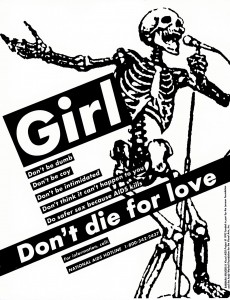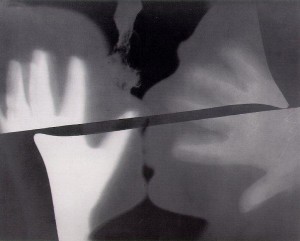1. The Kiss (1888-89) by Auguste Rodin
The concept for the sculpture originated from a relief in Rodin’s The Gates of Hell. The sculpture stirred controversy because of the erotic imagery, and wasn’t considered appropriate for public viewing causing outrage.
The sculpture now appears at the Musée Rodin in Paris, France.
2. Kiss by the Hôtel de Ville (1950) by Robert Doisneau
Doisneau’s most familiar photo – signifying the romance of Paris. The identity of the lovers remained a mystery until a couple who mistakenly believed it was them sought royalties in the 1990s.
3. The Kiss (1907-08) by Gustav Klimt
The most famous work by Gustav Klimt, an artist noted for his eroticism. The Kiss was part of his ‘golden phase’ and influenced by the arts and crafts movement and Art Nouveau. The Kiss can be viewed at Österreichische Galerie Belvedere, Vienna.
4. Love by Robert Indiana
Love is a famous sculpture by American Pop artist Robert Indiana. There are several versions, at the Indianapolis Museum of Art, Philadelphia Museum of Art and the one above located in New York City, USA. The original design was actually for a Christmas card (1964) for the Museum of Modern Art. The design has also been reproduced countless times in popular culture.
5. Oh, Jeff… I Love You Too, But… (1964) by Roy Lichtenstein
Oh, Jeff… I Love You, Too… But… is among the most famous paintings of Lichtenstein’s early romance comic derivative works from the period when he was adapting cartoons and advertisements into his style via Ben-Day dots. The work is said to depict the classic romance-comic story line of temporary adversity.
6. Parade Amoureuse (Love Parade) (1917) by Francis Picabia
Picabia’s mechanomorphic pictures suggest analogies between machines and the human form. To contemporary viewers they were scandalous in their rejection of the idea of the human soul and their emphasis instead on instincts and compulsions – both often erotic. In this work, Picabia blended male and female; the upper part in red might be considered female and the lower part in blue, male. The viewer can imagine the sound of hammering and the idea of a “sonorous sculpture,” or a musical instrument.
7. Untitled by Barbara Kruger
Don’t Die for Love was one of a number of pieces Kruger created for the project, and was displayed on nearly 200 billboards and transit shelters throughout San Francisco, Oakland, Miami, and Boston (not to mention its presence on cups and bags). Kruger, recognized for her boldly graphic combinations of text and images, has long produced work with political and feminist aims.
8. Love (2013) by Imperio
A neon installation celebrating love. The gentle electric pulsing of the lettering gradually builds into a powerful potent red leaving the viewer in no doubt about the power of love. The installation can be viewed at Iris Residences.
9. For the love of God (2007) by Damien Hirst
‘For the Love of God’, a platinum skull set with diamonds, is one of Hirst’s most important and widely recognised works. Its raw materials define it as an artwork of unprecedented scale. The 32 platinum plates making up ‘For the Love of God’ are set with 8,601 VVS to flawless pavé-set diamonds, weighing a massive 1,106.18 carats. The teeth inserted into the jaw are real and belong to the original skull.
10. In Bed The Kiss (1892) by Henri De Toulouse-Lautrec
Toulouse Lautrec painted this captivating Post-Impressionist artwork to show tender and sensual love.
11. Rayograph (1922) by Man Ray
Man Ray’s 1922 camera-less photo, which he dubbed a rayograph, shows a couple kissing, their hands overlaid on their faces, and the darkroom trays — all caught in ghostly shadows. A fascinating portrayal of chance occurrences on a piece of photographic paper, it illustrates one of the artist’s most quoted maxims: “I do not photograph nature. I photograph my visions.”
12. The Lovers (1928) by René Magritte
A surrealist masterpiece, René Magritte’s 1928 painting, The Lovers, evokes a strange sense of mystery. The veiled lovers embrace, but are unable to fully express their love because of the deathlike cloths that cover their heads —keeping them forever apart.
13. The Kiss (1908) by Constantin Brâncuși
The Kiss, by French-Romanian sculptor Constantin Brancusi, offers a symbolic interpretation of a male and a female body merging into one. The fourth of several versions of the lovers that Brancusi carved throughout his career, this piece is the most geometric. Wrapped in a tight embrace and joined at the mouth and eye, the couple become one, as real-life lovers often do.
14. The siesta (after Millet) (1890) by Vicent van Gogh
Siesta was painted in 1890 while Van Gogh stayed at St. Rémy.
The composition is taken from a drawing by Millet. A couple naps in the shade of a haystack, during midday. Remaining faithful to the original composition, even down to the still life details in the foreground, Van Gogh nevertheless imposes his own style upon this restful scene.















